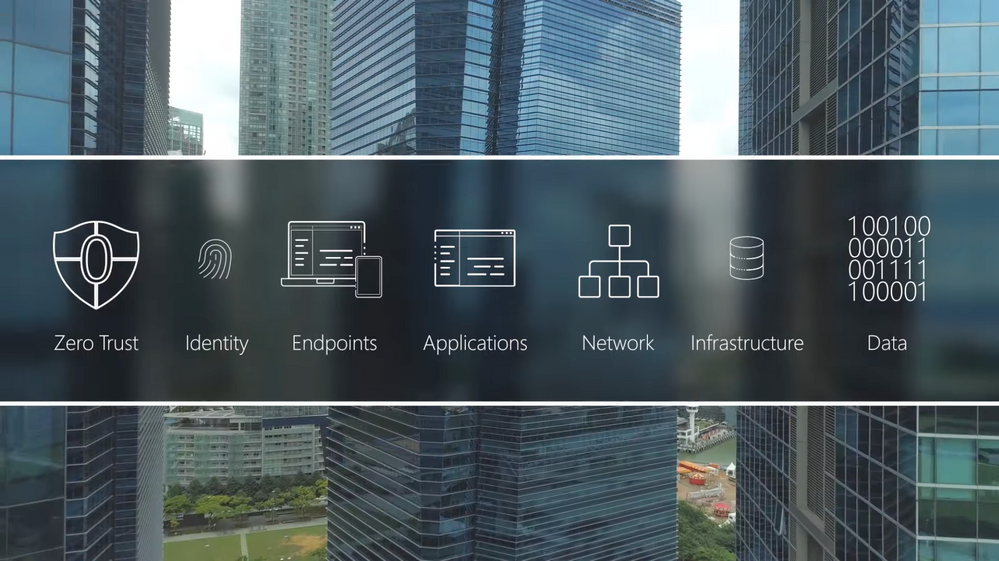
by Contributed | Jun 21, 2021 | Technology
This article is contributed. See the original author and article here.
This video series shows how you can adopt a Zero Trust approach for security and benefit from the core ways in which Microsoft can help. In the past, your defenses may have been focused on protecting network access with on-premises firewalls and VPNs, assuming everything inside the network was safe. But as corporate data footprints have expanded to sit outside your corporate network, to live in the Cloud or a hybrid across both, the Zero Trust security model has evolved to address a more holistic set of attack vectors.

Based on the principles of “verify explicitly”, “apply least privileged access” and “always assume breach”, Zero Trust establishes a comprehensive control plane across multiple layers of defense:
- Identity
- Endpoints
- Applications
- Network
- Infrastructure
- Data
Introduction to Zero Trust
Identity:
Join our host, Jeremy Chapman, as he unpacks the foundational layer of the model with identity. As the primary control plane for Zero Trust, it acts as the front door for people, service accounts, and devices as each requests access to resources. Identity is at the core of the Zero Trust concepts of never trust, always verify and grant the appropriate level of access through the principle of least privilege.
Zero Trust | Identity
Endpoints & Applications:
See how you can apply Zero Trust principles and policies to your endpoints and apps; the conduits for users to access your data, network, and resources. For Zero Trust, endpoints refer to the devices people use every day — both corporate or personally owned computers and mobile devices. The prevalence of remote work means devices can be connected from anywhere and the controls you apply should be correlated to the level of risk at those endpoints.
For corporate managed endpoints that run within your firewall or your VPN, you will still want to use principles of Zero Trust: Verify explicitly, apply least privileged access, and assume breach.Jeremy Chapman walks through your options, controls, and recent updates to implement the Zero Trust security model.
Zero Trust | Endpoints & Applications
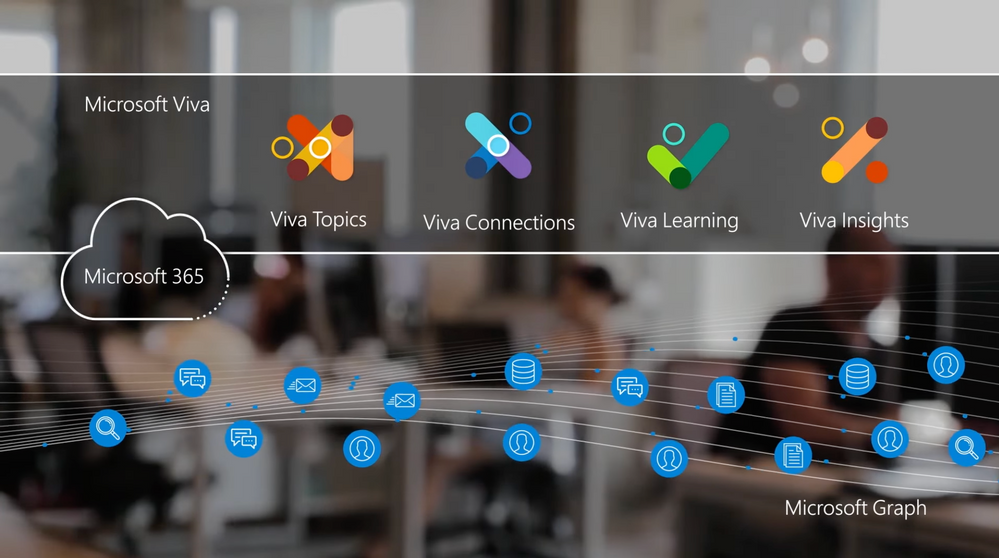
by Contributed | Jun 21, 2021 | Technology
This article is contributed. See the original author and article here.

This series of videos shows team leaders and admin the underlying tech and options for enabling and configuring the four core modules of Microsoft Viva. Viva is the new employee experience platform that connects learning, insights, resources, and communication. It has a unique set of curated and AI-enriched experiences built on top of and integrated with the foundational services of Microsoft 365.
Introduction to Microsoft Viva
Microsoft Viva’s 4 core modules:
- Viva Topics — builds a knowledge system for your organization
- Viva Connections — boosts employee engagement
- Viva Learning — creates a central hub to discover learning content and build new skills
- Viva Insights — recommends actions to help improve productivity and wellbeing
Microsoft Viva Topics:
Viva Topics builds a system that transforms information into knowledge and actively delivers it to you in the context of your work. As many of us are working remotely or in more hybrid office environments, it can be harder to stay informed. With Topics, we connect you to the knowledge and the people closest to it. CJ Tan, Lead Program Manager, joins host Jeremy Chapman to cover the overall experience for users, knowledge managers, and admins.
Microsoft Viva Topics
Microsoft Viva Connections:
Viva Connections is specifically about boosting employee engagement. This spans everyone in your organization, from everyday users, specific groups in departments, to frontline workers. It expands on your SharePoint home site and newsfeed and is designed to offer a destination that delivers personalized news, conversations, and commonly used resources. Adam Harmetz, lead engineer, joins host Jeremy Chapman to walk through the user experience, how to set it up, and options for personalizing information sharing by role.
Microsoft Viva Connections
Microsoft Viva Learning:
With Viva Learning, you have a center for personalized skill development that offers a unique social experience where learning content is available in the flow of work. It recommends and manages the progress of key trainings all from one place and is built on top of SharePoint, Microsoft Search, Microsoft Teams, Microsoft Graph, and Substrate. Swati Jhawar, Principal Program Manager for Microsoft Viva, joins Jeremy Chapman to share options for setup, learning content curation, and integration with your existing learning management system.
Microsoft Viva Learning
Microsoft Viva Insights:
With hybrid work at home and in the office as the new normal, Viva Insights gives individuals, managers, and leaders the insight to develop healthier work habits and a better work environment. It is an intelligent experience designed to leverage MyAnalytics, Workplace Analytics, and Exchange Online to deliver insights that recommend actions to help prioritize well-being and productivity. Engineering leader, Kamal Janardhan, joins Jeremy Chapman for a deep dive and a view of your options for configuration.
Microsoft Viva Insights
by Contributed | Jun 21, 2021 | Technology
This article is contributed. See the original author and article here.
With our recent announcement of support for custom containers in Azure Machine Learning comes support for a wide variety of machine learning frameworks and servers including TensorFlow Serving, R, and ML.NET. In this blog post, we’ll show you how to deploy a PyTorch model using TorchServe.
The steps below reference our existing TorchServe sample here.
Export your model as a .mar file
To use TorchServe, you first need to export your model in the “Model Archive Repository” (.mar) format. Follow the PyTorch quickstart to learn how to do this for your PyTorch model.
Save your .mar file in a directory called “torchserve.”
Construct a Dockerfile
In the existing sample, we have a two-line Dockerfile:
FROM pytorch/torchserve:latest-cpu
CMD ["torchserve","--start","--model-store","$MODEL_BASE_PATH/torchserve","--models","densenet161.mar","--ts-config","$MODEL_BASE_PATH/torchserve/config.properties"]
Modify this Dockerfile to pass the name of your exported model from the previous step for the “–models” argument.
Build an image
Now, build a Docker image from the Dockerfile in the previous step, and store this image in the Azure Container Registry associated with your workspace:
WORKSPACE=$(az config get --query "defaults[?name == 'workspace'].value" -o tsv)
ACR_NAME=$(az ml workspace show -w $WORKSPACE --query container_registry -o tsv | cut -d'/' -f9-)
if [[ $ACR_NAME == "" ]]
then
echo "ACR login failed, exiting"
exit 1
fi
az acr login -n $ACR_NAME
IMAGE_TAG=${ACR_NAME}.azurecr.io/torchserve:8080
az acr build $BASE_PATH/ -f $BASE_PATH/torchserve.dockerfile -t $IMAGE_TAG -r $ACR_NAME
Test locally
Ensure that you can serve your model by doing a local test. You will need to have Docker installed for this to work. Below, we show you how to run the image, download some sample data, and send a test liveness and scoring request.
# Run image locally for testing
docker run --rm -d -p 8080:8080 --name torchserve-test
-e MODEL_BASE_PATH=$MODEL_BASE_PATH
-v $PWD/$BASE_PATH/torchserve:$MODEL_BASE_PATH/torchserve $IMAGE_TAG
# Check Torchserve health
echo "Checking Torchserve health..."
curl http://localhost:8080/ping
# Download test image
echo "Downloading test image..."
wget https://aka.ms/torchserve-test-image -O kitten_small.jpg
# Check scoring locally
echo "Uploading testing image, the scoring is..."
curl http://localhost:8080/predictions/densenet161 -T kitten_small.jpg
docker stop torchserve-test
Create endpoint YAML
Create a YAML file that specifies the properties of the managed online endpoint you would like to create. In the example below, we specify the location of the model we will use as well as the Azure Virtual Machine size to use when deploying.
$schema: https://azuremlsdk2.blob.core.windows.net/latest/managedOnlineEndpoint.schema.json
name: torchserve-endpoint
type: online
auth_mode: aml_token
traffic:
torchserve: 100
deployments:
- name: torchserve
model:
name: torchserve-densenet161
version: 1
local_path: ./torchserve
environment_variables:
MODEL_BASE_PATH: /var/azureml-app/azureml-models/torchserve-densenet161/1
environment:
name: torchserve
version: 1
docker:
image: {{acr_name}}.azurecr.io/torchserve:8080
inference_config:
liveness_route:
port: 8080
path: /ping
readiness_route:
port: 8080
path: /ping
scoring_route:
port: 8080
path: /predictions/densenet161
instance_type: Standard_F2s_v2
scale_settings:
scale_type: manual
instance_count: 1
min_instances: 1
max_instances: 2
Create endpoint
Now that you have tested locally and you have a YAML file, you can create your endpoint:
az ml endpoint create -f $BASE_PATH/$ENDPOINT_NAME.yml -n $ENDPOINT_NAME
Send a scoring request
Once your endpoint finishes deploying, you can send it unlabeled data for scoring:
# Get accessToken
echo "Getting access token..."
TOKEN=$(az ml endpoint get-credentials -n $ENDPOINT_NAME --query accessToken -o tsv)
# Get scoring url
echo "Getting scoring url..."
SCORING_URL=$(az ml endpoint show -n $ENDPOINT_NAME --query scoring_uri -o tsv)
echo "Scoring url is $SCORING_URL"
# Check scoring
echo "Uploading testing image, the scoring is..."
curl -H "Authorization: {Bearer $TOKEN}" -T kitten_small.jpg $SCORING_URL
Delete resources
Now that you have successfully created and tested your TorchServe endpoint, you can delete it.
# Delete endpoint
echo "Deleting endpoint..."
az ml endpoint delete -n $ENDPOINT_NAME --yes
# Delete model
echo "Deleting model..."
az ml model delete -n $AML_MODEL_NAME --version 1
Next steps
Read our documentation to learn more and see our other samples.
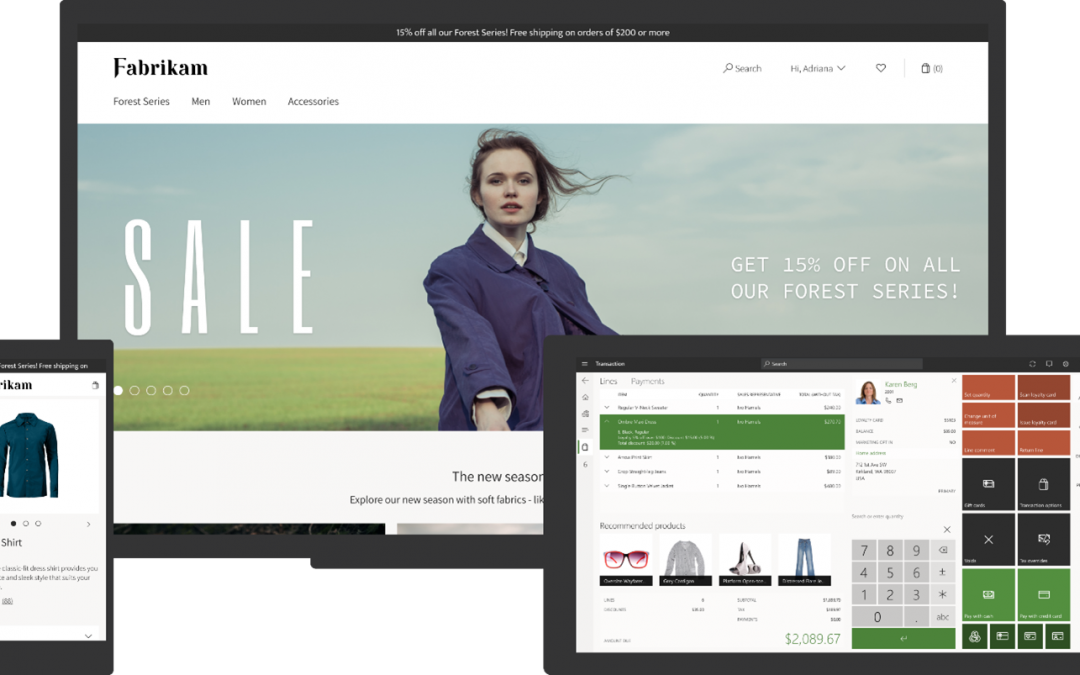
by Contributed | Jun 21, 2021 | Dynamics 365, Microsoft 365, Technology
This article is contributed. See the original author and article here.
The last few decades have seen monumental change in the retail industry. Specifically, technology has untethered the shopper from the store and allowed retail to take place anywhere, at any time. When viewed through hindsight, these changes occurred just in time, for without the e-commerce revolution during the past two decades, retailers would have faced a significantly more difficult situation during the recent pandemic. Nonetheless, innovative companies have been able to adapt and adjust to these challenging times.
Businesses looked to the role of technology in enabling the agility to not only meet emerging customer needs but also to drive lasting impact in their organization’s business efficiency, customer experience, and market position. Patagonia partnered with Microsoft and Dynamics 365 to help navigate through the market turmoil and continue to innovate and drive to meet their business goals.
The pandemic forced many retailers to rethink almost everything related to the purchase experience. Where and how can customers pick up and return their purchased items? How can they pay? What is the utility of a store in an online-first shopping environment? Questions like these are now being answered in ways that will reverberate through the industry long after the pandemic has receded.
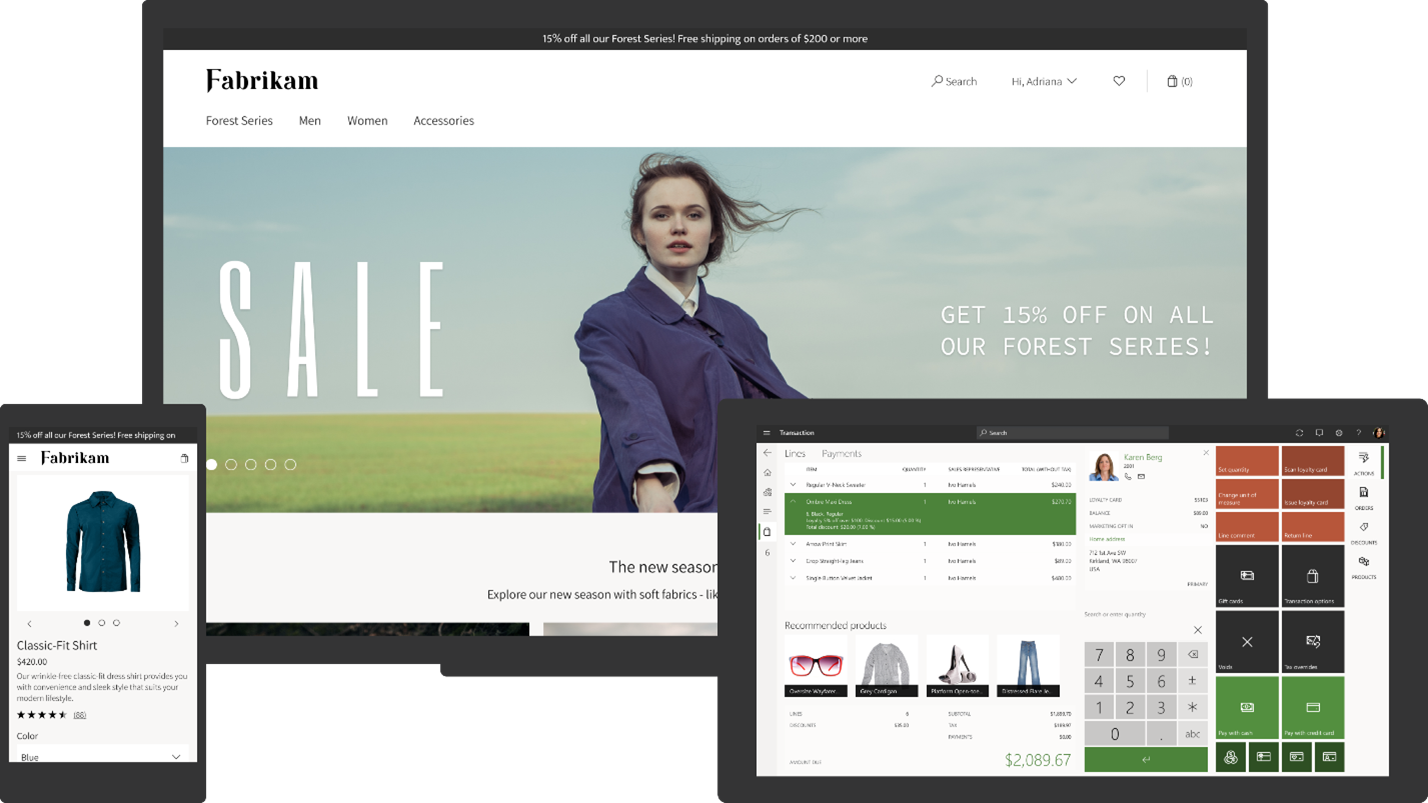
Dynamics 365 has helped equip retailers with a flexible, unified, and seamless buying experience for customers and partners. With Dynamics 365 Commerce, businesses have been able to engage across traditional and emerging channels while allowing consumers the option to buy when, how, and where they wanton any deviceby delivering a frictionless and consistent experience across online and offline channels.
As we continue through the pandemic, both shoppers and retailers will have to adapt to a new normal. Let’s take a closer look at some trends that will persist in retail for the time to come.
1. Flexible order fulfillment
2020 ushered in the mass adoption of non-traditional fulfillment opportunities. One of these new methods that became essential during the past year is BOPIS, or buy-online-pick-up-in-store. As the pandemic unfolded, retailers saw a 208 percent increase in BOPIS from the previous year as customers gravitated to the increased convenience and choice that flexible order fulfillment offered. This accelerated a trend that had been gaining ground in some industries, like grocery, and saw it spread to retail sectors of all kinds.
2. Flexible returns
Like flexible order fulfillment, flexible returns provide the customer with increased convenience, this time related to items they no longer need or are not satisfied with. Returns are costly, and COVID-19 supercharged their numbers, with 2020 seeing consumers return $428 billion in merchandise, with $102 billion attributed to online purchasing, up 38.5 percent from 2019. As we move forward, the challenge will be for retailers to manage costs around returns without depriving consumers of the ease of returns they came to expect during the pandemic.
3. Contactless payments
Of all the trends mentioned in this blog, contactless payment via radio frequency identification (RFID) and near-field communication technology was perhaps the most widely adopted before the pandemic. Even at that, the need for increased cleanliness protocols and a desire to avoid touching surfaces where possible meant that the use of contactless payments has increased by 30 percent since COVID-19 started. With continued growth expected, savvy retailers will no longer allow the purchase experience to be tethered to specific locations or modes of payment.
4. Omnichannel retail
Like contactless payments, omnichannel retail plans had already been a high priority for many companies pre-COVID-19. However, the pandemic forced many retailers to speed up transitions from mostly brick-and-mortar to a proper omnichannel solution. Omnichannel has become an absolute requirement for modern retailers to survive. Part of this transition includes a re-thinking of the physical store itself. Rather than acting as the critical location in the retail journeya place for customers to browse for and purchase itemsthe store now serves as a place for customers to see, touch, and feel items they have discovered through other shopping channels before final purchase.
Microsoft is helping retailers deliver on their brand promises
In each of the trends mentioned, consumers rushed to welcome the added flexibility to the retail experience. As we continue through the pandemic and return to a new normal, consumers will be reticent to give their newfound conveniences.
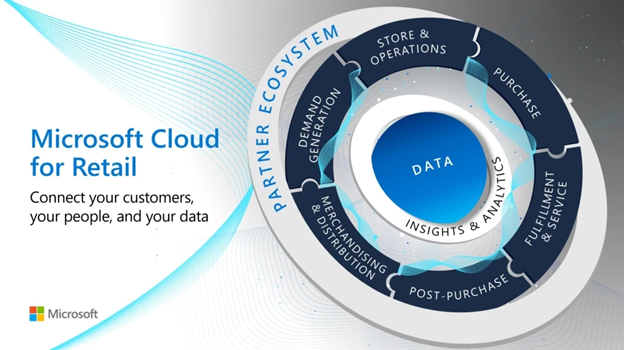
At January NRF we announced Microsoft Cloud for Retail to help retailers deliver seamless experiences across the entire buying journey, and recently we announced even more capabilities within the Microsoft Cloud for Retail public preview to help businesses build flexibility into their systems in order to thrive in the post-pandemic world.
What’s next?
The post 4 post-pandemic retail trends appeared first on Microsoft Dynamics 365 Blog.
Brought to you by Dr. Ware, Microsoft Office 365 Silver Partner, Charleston SC.

by Contributed | Jun 21, 2021 | Technology
This article is contributed. See the original author and article here.

Today, we are announcing the 2nd annual Hackathon for Azure Sentinel! This hackathon challenges security experts around the globe to build end-to-end cybersecurity solutions for Azure Sentinel that delivers enterprise value by collecting data, managing security, detecting, hunting, investigating, and responding to constantly evolving threats. We invite you to participate in this hackathon for a chance to solve this challenge and win a piece of the $19000 cash prize pool*. This online hackathon runs from June 21st to Oct 4th, 2021, and is open to individuals, teams, and organizations globally.
Azure Sentinel provides a platform for security analysts and threat hunters of various levels to not only leverage existing content like workbooks (dashboard), playbooks (workflow orchestrations), analytic rules (detections), hunting queries, etc. but also build custom content and solutions as well. Furthermore, Azure Sentinel also provides APIs for integrating different types of applications to connect with Azure Sentinel data and insights. Here are few examples of end-to-end solutions that unlocks the potential of Azure Sentinel and drives enterprise value.
You can discover more examples by reviewing content and solutions in the Azure Sentinel GitHub repo and blogs. You can refer to the last year’s Azure Sentinel Hackathon for ideas too!
Prizes
In addition to learning more about Azure Sentinel and delivering cybersecurity value to enterprises, this hackathon offers the following awesome prizes for top projects:
- First Place (1) – $10,000 USD cash prize
- Second Place (1) – $4000 USD cash prize
- Runners Up (2) – $1500 USD cash prize each
- Popular Choice (1) – $1000 USD cash prize
- The first 10 eligible submissions also qualify to receive $100 each.
Note: Refer to the Hackathon official rules for details on project types that qualify for each prize category
In addition, the four winning projects will be heavily promoted on Microsoft blogs and social media so that your creative projects are widely known to all. The criteria for judging consist of quality of the idea, value to enterprise and technical implementation. Refer to the Azure Sentinel Hackathon website for further details and get started.
Judging Panel
Judging commences immediately after the hackathon submission window closes on October 4th, 2021. We’ll announce the winners on or before October 27th, 2021. Our judging panel currently includes the following influencers and experts in the cybersecurity community.
- Ann Johnson – Corporate Vice President, Cybersecurity Solutions Group, Microsoft
- Vasu Jakkal – Corporate Vice President, Microsoft Security, Compliance and Identity
- John Lambert – Distinguished Engineer and General Manager, Microsoft Threat Intelligence Center
- Nick Lippis – Co-Founder, Co-Chair ONUG
- Andrii Bezverkhyi – CEO & founder of SOC Prime, inventor of Uncoder.IO
Next Steps
Let the #AzureSecurityHackathon begin!
*No purchase necessary. Open only to new and existing Devpost users who are the age of majority in their country. Game ends October 4th, 2021 at 9:00 AM Pacific Time. Refer to the official rules for details.









Recent Comments